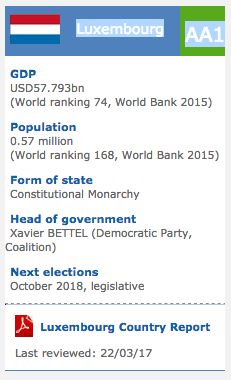Malta: Malta Art / Culture Profile 2012
2012/03/19
Malta Art / Culture Profile 2012
The culture of prehistoric Malta
The earliest inhabitants of the Maltese Islands are believed to have been farmers who crossed over from nearby Sicily sometime before 5000 BCE. They grew cereals and raised domestic livestock and, in keeping with many other ancient Mediterranean cultures, worshipped a mother goddess, represented in Malta by statuettes of unusually large proportions. Pottery from the earliest period of Maltese civilization (known as the Għar Dalam phase) is similar to that found in Agrigento, Sicily. These people were either supplanted by, or gave rise to a mysterious culture of megalithic temple builders, whose surviving monuments on Malta and Gozo are now believed to be the oldest standing stone structures in the world. The temples date from 4000 - 2500 BCE, and typically consist of a complex trefoil (cloverleaf) design.
Little is known about the temple builders of Malta and Gozo; however, there is some evidence that their rituals included animal sacrifice. This culture disappeared from the Maltese Islands around 2500 BCE. The reasons for the disappearance are shrouded in mystery, although historians and archeologists have speculated that the temple builders fell victim to famine and disease. War is unlikely to have been the cause of their disappearance, since archeological digs on Malta have yielded little or no evidence of weapons.
The Maltese Islands were depopulated for several decades, until the arrival of a new influx of Bronze Age immigrants, a culture that is known to have cremated its dead, and introduced smaller megalithic structures called dolmens to Malta.
Languages
The national language of Malta is Maltese. The Maltese alphabet is based on the Latin alphabet, but uses the diacritically altered letters ż, also found in Polish, as well as the letters ċ, ġ and ħ, which are unique to Maltese. The official languages are English and Maltese. Italian, French and German are also widely spoken and taught in secondary schools, though the latter two less so.
Literature
Diglossia
The development of native, Maltese literary works has historically been hampered by the diglossia that has characterized the culture of Malta throughout its history. For many centuries, Maltese was the language of the kitchen and the workshop, while Italian was the language of learning, literature, the arts, law and commerce. Hence, until the early 20th century, the vast majority of literary works in Malta were written in Italian. In early Maltese history, diglossia manifested itself in the co-existence of an ancient Phoenician language, and the language of a series of rulers, most notably, Latin, Greek, Arabic, Sicilian, French, Spanish and Italian, and from 1800 onwards, English. The Maltese language today is heavily overlaid with Romance - and now, English - influences as a result.
Maltese writers developed an uninterrupted local "Italian" literary movement which went on up to about four decades ago, whereas Maltese as a literary idiom started to coexist on a wide scale in the last decades of the 19th century. Whilst Maltese has the historical priority on the level of the spoken language, Italian has the priority of being the almost exclusive written medium, for the socio-cultural affairs, for the longest period. The native tongue had only to wait for the arrival of a new mentality which could integrate an unwritten, popular tradition with a written, academically respectable one.
The emergence of Maltese literature
The oldest known literary text in the Maltese language is Pietru Caxaro's poem, Cantilena (circa 1470 to 1485) (also known as Xidew il-Qada), followed by Gian Francesco Bonamico's sonnet of praise to Grand Master Nicolò Cotoner, Mejju gie' bl'Uard, u Zahar (The month of May has arrived, with roses and orange blossoms), circa 1672. The earliest known Maltese dictionary was written by Francois de Vion Thezan Court (circa 1640). In 1700, an anonymous Gozitan poet wrote Jaħasra Mingħajr Ħtija (Unfortunately Innocent). A Maltese translation of the Lord's Prayer appeared in Johannes Heinrich Maius's work Specimen Lingua Punicæ in hodierna Melitensium superstitis (1718). A collection of religious sermons by a certain Dun Ignazio Saverio Mifsud, published between 1739 and 1746, is now regarded as the earliest known Maltese prose. An anonymous poem entitled Fuqek Nitħaddet Malta (I am talking about you, Malta), was written circa 1749, regarding the uprising of the slaves of that year. A few years later, in 1752, a catechism entitled Tagħlim Nisrani ta' Dun Franġisk Wizzino (Don Francesco Wizzino's Christian Teachings) was published in both Maltese and Italian. The occasion of Carnival in 1760 saw the publication of a collection of burlesque verses under the heading Żwieġ la Maltija (Marriage, in the Maltese Style), by Dun Feliċ Demarco.
A child of the Romanticism movement, Maltese patriot Mikiel Anton Vassalli (1764-1829) hailed the emergence of literary Maltese as "one of the ancient patrimonies...of the new emerging nation," seeing this nascent trend as: the affirmation of the singular and collective identity, and the cultivation and diffusion of the national speech medium as the most sacred component in the definition of the patria and as the most effective justification both for a dominated community's claiming to be a nation and for the subsequent struggle against foreign rulers.
Between 1798 and 1800, while Malta was under the rule of Napoleonic France, a Maltese translation of L-Għanja tat-Trijonf tal-Libertà (Ode to the Triumph of Liberty), by Citizen La Coretterie, Secretary to the French Government Commissioner, was published on the occasion of Bastille Day.
The first translation into Maltese of a biblical text, the Gospel of St. John. was published in 1822 (trans. Ġużeppi Marija Cannolo), on the initiative of the Bible Society in Malta. The first Maltese language newspaper, l-Arlekkin jew Kawlata Ingliża u Maltija (The Harlequin, or a mix of English and Maltese) appeared in 1839, and featured the poems l-Imħabba u Fantasija (Love and Fantasy) and Sunett (A Sonnett).
The first epic poem in Maltese, Il-Ġifen Tork (The Turkish Caravel), by Giovanni Antonio Vassallo, was published in 1842, followed by Ħrejjef bil-Malti (Legends in Maltese) and Ħrejjef u Ċajt bil-Malti (Legends and Jokes in Maltese) in 1861 and 1863, respectively. The same author published the first history book in the Maltese language, entitled Storja ta’ Malta Miktuba għall-Poplu (The People's History of Malta), in 1862.
1863 saw the publication of the first novel in Maltese, Elvira jew Imħabba ta’ Tirann (Elvira, or the Love of a Tyrant), by the Neopolitan author, Giuseppe Folliero de Luna. Anton Manwel Caruana's novel, Ineż Farruġ (1889), was modelled on traditional Italian historical novels, such as Manzoni's I promessi sposi.
more about : Sport
more about : Art and Costum
- Malta News
-
- AFGHANISTAN: UNWTO: International tourism – strongest half-year results since 2010
- ALBANIA: US LNG exports make European market more competitive
- CROATIA: Migration drives EU population up, Luxembourg, Sweden, Malta register large growth in 2016
- MALTA: Twelve Maltese beaches awarded Blue Flag status
- MALTA: Joseph Cuschieri, Executive Chairman of the Malta Gaming Authority
- MALTA: David Borg, chairman of local waste management and recycling firm WasteServ
- Trending Articles
-
- EUROPE: Ball Corporation Debuts Three New Aluminium Beverage Can Sizes
- SOUTH AFRICA: Nigeria and South Africa emerge from recession
- NIGERIA: The Security and Exchange Commission approves the 40th Annual General Meeting of Oando PLC
- KENYA: Kenya awards major contract for construction of core infrastructure for smart city
- CHINA: Xi Jinping opens BRICS Summit in Xiamen, asks members to shelve differences
- BAHRAIN: Aluminium Bahrain’s Line 6 Expansion Achieves 25 Percent Completion














